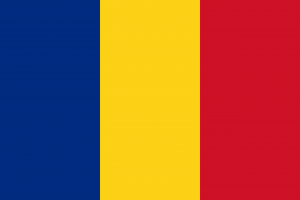Language/Romanian/Culture/Media-and-Entertainment
As a language teacher, I always encourage my students to learn not only the grammar and vocabulary of a language but also the culture surrounding it. In this lesson, we will explore the role of media, arts, and entertainment industries in reflecting contemporary Romanian culture and society.
Media in Romania
Romania has a diverse media landscape that includes television, radio, newspapers, and online news outlets. The media has undergone significant changes in recent years, and the sector is now more independent and pluralistic. Freedom of the press is protected by the Constitution, and the media has played a crucial role in shaping public discourse on various social and political issues.
The most-watched television channels in Romania are ProTV, Antena 1, and Kanal D. The public broadcaster, TVR, also has several channels and programs in Romanian and minority languages. Radio Romania is the national public broadcaster, and there are many private radio stations covering various topics, from music to news and talk shows. Online media has seen a surge in popularity in recent years, with several news websites, blogs, and social media groups providing alternative sources of information.
If you are interested in following Romanian news and media, here are some resources:
- Adevărul - one of the oldest and most respected newspapers in Romania
- Digi24 - a popular online news outlet with a focus on breaking news and investigative reporting
- Radio Romania International - the international broadcasting unit of Radio Romania, providing news and cultural programs in various languages
Arts and Entertainment
Romania has a rich artistic and cultural heritage, shaped by its history and diverse ethnic influences. The country has produced many accomplished writers, poets, musicians, and painters, and Romanian art is known for its intricate designs, vivid colors, and emotional intensity.
In recent years, Romania has seen a surge in cultural events and festivals, showcasing both traditional and contemporary art forms. The most famous cultural event in Romania is the George Enescu Festival, held biannually in Bucharest and honoring the country's most celebrated composer. The festival attracts top musicians and ensembles from around the world and features symphonic, chamber, and vocal music performances.
Romania's film industry has also gained international recognition, with several films and directors winning prizes at major film festivals such as Cannes and Berlin. Romanian cinema is known for its realistic and raw portrayal of social and political issues, often using non-professional actors and a minimalist aesthetic. Some of the most acclaimed Romanian films are "The Death of Mr. Lazarescu" (2005), "4 Months, 3 Weeks, and 2 Days" (2007), and "Graduation" (2016).
If you want to explore Romanian arts and entertainment further, here are some suggestions:
- National Museum of Art of Romania - one of the most important art museums in the country, showcasing Romanian and European art from ancient times to the present day
- TIFF - Transylvania International Film Festival, a popular film festival held annually in Cluj-Napoca, showcasing Romanian and international films
- Folk Music Festival "Maria Tănase" - a yearly event held in her honor, celebrating the famous Romanian singer and her contribution to shaping traditional Romanian music
Romanian Language in Media and Arts
Media and arts are also vital in language learning, as they expose learners to authentic language use and help them develop a deeper understanding of cultural values and context. In Romanian, the language used in media and arts may vary depending on the genre and audience, but generally follows standard grammar and vocabulary rules.
To help you learn more about Romanian language use in media and arts, here are some examples:
| Romanian | Pronunciation | English |
|---|---|---|
| scene de muzică | ['ʃɛne de mu'zikə] | music scene |
| film documentar | ['film dokumen'tar] | documentary film |
| știrile de seară | ['ʃtirile de se'ara] | evening news |
We hope this lesson has provided you with some insights into Romanian media, arts, and entertainment industries, and their reflection of contemporary society and culture.
Sources

